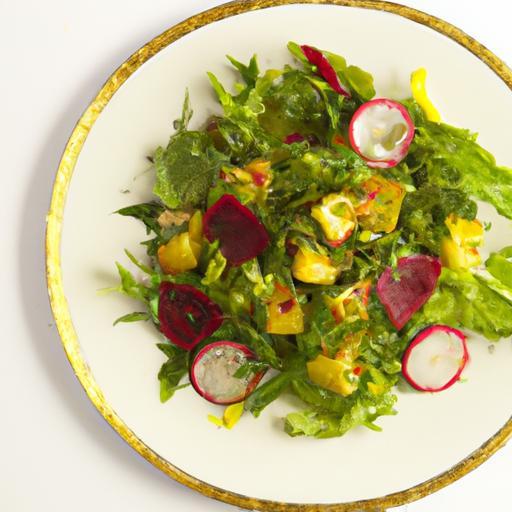Imagine sitting down to a vibrant plate of fresh vegetables, grains, and legumes-a meal brimming with color and nutrients. Yet, as you take the first bite, something feels… missing. The flavors, though wholesome, seem muted, leaving your taste buds longing for more. This isn’t just your imagination; many people who embrace vegetarian meals encounter that elusive gap between nourishment and satisfaction. But why? In this article, we unlock the secrets behind that incomplete feeling, exploring how thoughtful seasoning, texture, and umami-rich ingredients can transform your vegetarian dishes from bland to bursting with flavor. Get ready to elevate your plant-based cuisine and celebrate meals that are as exciting on the palate as they are nourishing for the body.
Understanding the Role of Umami in Vegetarian Dishes: A Flavor Revolution
Unlocking Flavor: why your vegetarian meal feels incomplete is often due to the subtle absence of umami-the savory, mouthwatering sensation that rounds out every bite. This essential taste, recognized as the fifth basic flavor alongside sweet, salty, sour, and bitter, brings depth and satisfaction to plant-based meals. From the earthy mushrooms in a hearty stew to the fermented kick of miso in a simple broth, umami transforms simple ingredients into unforgettable dishes.
Combining science and culinary artistry, umami is primarily driven by naturally occurring glutamates, inosinate, and guanylate-compounds that signal richness to our taste buds. Vegetarian dishes often struggle to hit this savory mark, but with deliberate choices and creative techniques, you can elevate your meals by balancing texture and aroma while incorporating savory enhancers that keep health front and center.
Prep and Cook Time
- Preparation: 15 minutes
- Cooking: 25 minutes
- Total Time: 40 minutes
Yield
- Serves 4
Difficulty Level
- Easy to Medium
Ingredients
- 1 cup dried shiitake mushrooms, soaked and sliced
- 2 tablespoons miso paste (white or yellow)
- 1 tablespoon tamari or soy sauce (low sodium preferred)
- 1 tablespoon nutritional yeast
- 1 cup cooked lentils, rinsed and drained
- 1 medium onion, finely chopped
- 3 cloves garlic, minced
- 1 tablespoon olive oil
- 1 teaspoon smoked paprika
- 1/2 cup vegetable broth (preferably homemade or low sodium)
- Salt and freshly ground black pepper, to taste
- Fresh parsley, chopped (for garnish)
Instructions
- Prepare the mushrooms: Soak the dried shiitake mushrooms in warm water for 20 minutes, then drain and slice them thinly. The soaking liquid can be reserved for later use as a flavorful broth base.
- Sauté aromatics: Warm the olive oil in a large skillet over medium heat. Add the chopped onion and garlic, sautéing until fragrant and golden-about 5 minutes. Stir occasionally to prevent burning.
- Add mushrooms and spices: Toss in the sliced shiitake mushrooms and sprinkle smoked paprika. Sauté until mushrooms soften and develop a slight caramelization, 7-8 minutes.
- Mix in the lentils and seasonings: Stir in the cooked lentils, miso paste, nutritional yeast, and tamari. Blend well to coat everything evenly while gently heating for 3 minutes, allowing the umami flavors to meld.
- Deglaze and simmer: Pour in the vegetable broth (and reserved mushroom soaking liquid if desired), scraping any browned bits from the pan bottom. Bring to a gentle simmer and cook for another 5 minutes, reducing slightly.
- Final seasoning: Taste, then adjust salt and pepper as needed. The miso and tamari provide natural saltiness, so add cautiously to keep it balanced and healthy.
- Serve and garnish: Plate the savory mushroom and lentil mixture and sprinkle with freshly chopped parsley. Enjoy as a main dish or a rich topping for grains or roasted vegetables.
Tips for Success
- Elevate umami naturally: Incorporate fermented or aged ingredients like miso and nutritional yeast-they provide rich, savory notes without artificial enhancers.
- Texture balance: Soaking and caramelizing mushrooms unlock deep flavors and a pleasing meaty texture, while lentils add heartiness and protein.
- Health-conscious seasoning: Use low sodium tamari and homemade vegetable broth to control sodium levels while preserving rich taste.
- Make-ahead friendly: This dish tastes even better the next day as flavors intensify-store in an airtight container for up to 3 days, then gently reheat.
- Substitution note: If shiitake mushrooms aren’t available, dried porcini or cremini work beautifully. Adjust soaking times accordingly.
Serving Suggestions
Transform this vibrant umami-packed mixture into a versatile staple:
- Serve over warm, fluffy quinoa or brown rice for a complete protein profile.
- Use as a savory filling for whole-grain tacos or stuffed bell peppers.
- Pair with roasted root vegetables and garnish with a fresh squeeze of lemon to brighten the dish’s depth.
- Top with toasted pine nuts or pumpkin seeds for an added crunchy contrast.
| Nutrient | Per Serving |
|---|---|
| Calories | 280 kcal |
| Protein | 18 g |
| Carbohydrates | 32 g |
| Fat | 6 g |
For a deeper dive into savory enhancement techniques, check our guide on Vegetarian Umami Boosters. To understand the science of taste, this journal article provides comprehensive insights into umami receptors and flavor chemistry.

Q&A
Q&A: Unlocking Flavor – Why Your Vegetarian Meal Feels Incomplete
Q1: Why do some vegetarian meals feel like they’re missing something?
A1: Often, vegetarian meals miss that “umami punch” – the rich, savory taste that gives dishes depth and satisfaction. Without it, meals can feel flat or one-dimensional, leaving your palate craving more complexity.
Q2: What exactly is umami, and why is it important in vegetarian cooking?
A2: Umami is the fifth basic taste, alongside sweet, sour, salty, and bitter. It’s the mouthwatering essence found in aged cheeses, mushrooms, soy sauce, and tomatoes. In vegetarian cooking, umami bridges the gap, turning simple veggies into soulful, crave-worthy dishes.
Q3: How can I unlock flavor and make my vegetarian meals more satisfying?
A3: Think layers! Use ingredients bursting with natural umami-sun-dried tomatoes, miso paste, nutritional yeast, roasted mushrooms, fermented soy products, and caramelized onions. Also, balance acidity and salt to awaken every bite.
Q4: Are there cooking techniques that improve flavor in vegetarian dishes?
A4: Absolutely! Techniques like roasting, caramelizing, and slow simmering concentrate flavors. Toasting nuts or seeds adds crunch and nuttiness. Even a splash of acid-lemon juice or vinegar-can brighten and elevate your meal’s profile.
Q5: Can plant-based proteins help make vegetarian meals feel more complete?
A5: Yes! Incorporating legumes, tempeh, seitan, or tofu provides texture and sustenance, but seasoning is key. Marinate and season these proteins well to infuse them with flavor, ensuring they’re not just fillers but flavor carriers.
Q6: What are some common pitfalls that cause vegetarian dishes to feel bland?
A6: Skipping seasoning, relying too heavily on raw or undercooked veggies, and neglecting fat can all cause blandness. Fat carries flavor, so incorporating oils, nuts, or avocado can transform a meal from dull to delightful.
Q7: Is it necessary to use animal-based ingredients to achieve rich flavor in vegetarian dishes?
A7: Not at all! Plenty of plant-based ingredients deliver intense flavor without animal products. Think smoked paprika for smokiness, tamari for depth, or nutritional yeast for cheesy notes-unlocking flavor is about smart ingredient choices, not animal additions.
Q8: How can I train my taste buds to appreciate more complex vegetarian flavors?
A8: Experiment boldly and eat mindfully! Taste different spices, herbs, and umami-rich ingredients regularly. Over time, your palate grows more sensitive, and subtle layers of flavor become more enjoyable, making your vegetarian meals irresistibly complete.
Unlocking flavor in vegetarian cooking is like unlocking a treasure chest – it takes curiosity, creativity, and a few key flavor gems to transform any meal from incomplete to unforgettable.
Wrapping Up
As you venture back into your kitchen, let this newfound understanding of flavor be your secret ingredient. Unlocking the full potential of vegetarian meals isn’t about what’s missing-it’s about what you can add: layers of umami, bursts of acidity, and a symphony of spices that make every bite sing. By embracing these flavorful building blocks, your plant-based dishes can transform from simply “good” to irresistibly satisfying. So next time your vegetarian meal feels incomplete, remember-it’s not the absence of meat, but the presence of vibrant, creative flavor that truly completes the experience.


